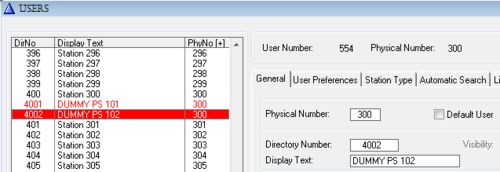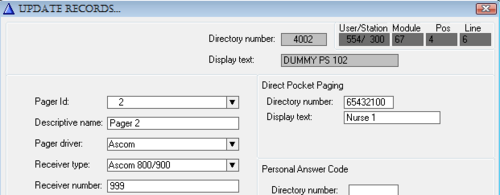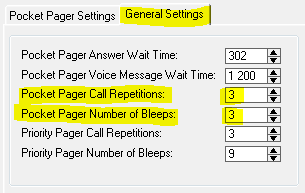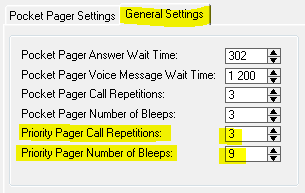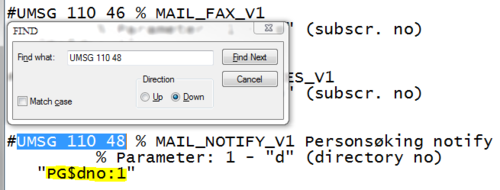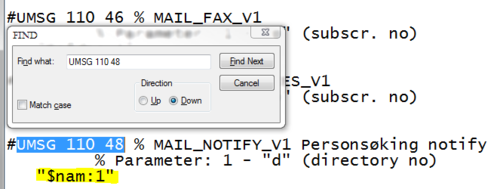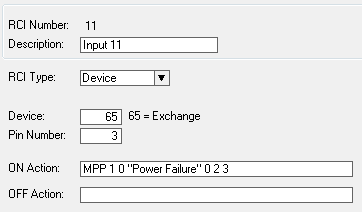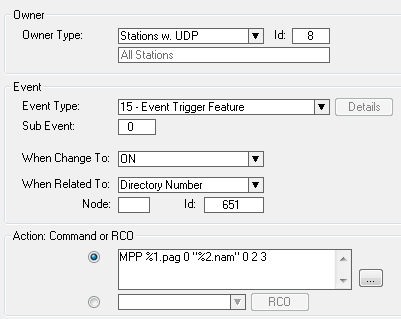Pocket Paging in a Hospital
From Zenitel Wiki
In a Hospital there is often not enough to page a person where only the initiator number is shown in the receiver display. A significant difference in tone characteristics, priority and text it is often a demand. This applies especially to alarms and calls for key, critical personnel teams like doctors, x-ray, anesthesia and nurses during heart failures and other complications. But it is also useful for call requests from doors, elevators and technical alarms to other key personnel.
Contents
Search types
The search types can be divided in to three categories:
- Normal: Activated by dialing the station or dummy number plus digit 1. The A-subscriber directory number is shown in the Pocket Pager receiver display. The recipient dials the shown number from the closest Zenitel Intercom Station to get in contact with the sender.
- Alarm: Activated by dialing the station or dummy number plus the last DAK key (DAK10). The A-subscriber name is shown in the Pocket Pager receiver display, and there is a different tone characteristic and priority than the normal search type. Often used to reach medical emergency teams that must physically reach the sender as soon as possible, thus making the name rather than the number more important. Can also be used to send other texts then own station name from master stations; for example “HELI 20 MINS” to give medial emergency teams information about an incoming helicopter. In this case it is actually the B-subscriber station name that is transmitted.
- Technical alarm: Activated from RCI or DAK without additional digits. Can be given a dedicated characteristic which differs from normal and alarm search types. Can also be used for door station calls or other types of substation calls.
System requirements
- AlphaCom: AMC10.23 or later
- ICX-AlphaCom: any
- AlphaPro 10.29 or later.
Limitations
Search type Alarm cannot be combined in the same system with Pocket Paging calls using answer code (*45), because they use the same field from the MDF (Message Description File).
Programming
All Pocket Pagers are defined in the Pocket Paging window
or from the Users&Stations window through the Pager button.
The team search number can only be defined from the Pocket Paging window.
Search Type: Normal
Change *44 to *1 in Directory&Features. In the Autoload the default code for "Repeat Absent Message" is digit 1 during conversation. If this feature is used, then it must be changed to a different number first. A good idea can be to use *44 for this feature instead of *1. This is achieved by changing *1 to a temporarily number. i.e. *12, then changing *44 to *1 and finally changing *12 to *44.
Direct Pocket Paging is used to page personnel without a dedicated Zenitel Intercom station. Direct Pocket Paging is associated with a user number and not a physical number. A physical number can have multiple users. A good rule is to let these directory numbers be masked by the owner of the physical number:
The Pocket Pager receiver for the user is defined by clicking the Pager button:
The number dialed will be the Direct Pocket Paging number, the user will then be prompted to dial an additional digit to activate the paging. The paging process is then equal for users with and without a physical station (aka Dummy). Direct Pocket Paging has feature number 23/xxx, where xxx = user number 1-600 and can also be defined directly from the Directory&Feature window:
In a small system with many available physical numbers there is no need to have many users on a single physical number. If possible it is just as well to use a user with physical number for each "dummy" pager.
Priority and beep characteristic for search type Normal can be changed through the General Settings in the Pocket Pager window:
Search Type: Alarm
From AMC10.23 there is a new feature 25 with directory number *48 meant to be used for search type Alarm. This feature gives a different priority and beep characteristic from search type Normal, which can be changed in the General Settings in the Pocket Paging Window:
*48 can also be put on a DAK or search string as D48. It is also possible to configure a DAK key with a double function such as I614D48, giving the ordinary directory search in idle and paging with Alarm type during a conversation.
Dummy numbers are programmed in the same way as for search type Normal.
By default an Alarm Call will show the prefix PG in the receiver display. A page made from station 101 will then show "PG101". The reason is that the Alarm call is using the same MDF parameter as the Pocket paging connection with answer option feature (*45). The MDF (Message Description File) is a language dependent file which is made when a new database is created in AlphaPro. This file describes all the texts for the display functions in the AlphaCom, and also contains the setup of the text to the Pocket Pagers. This file can be edited from the AlphaPro system window. The button must be made visible by hitting CTRL+Alt+M on your keyboard:
To edit the file the easiest way is to copy all to Notepad (or other text editorial program). Right click in the MDF file and choose "Select All", right click again and select "Copy". Paste the information in to the text editor and search for "UMSG 110 48"". Change it to show station name instead of number like this:
Important Note:
The above example is meant for Ascom. By use of other brands it might be a different text appearing other than PG. Search for the text that appears in the receiver and replace this in the same manner as above, so the content is "$nam:1".
Search Type: Technical Alarm
Paging from a substation and RCI's can be done by using the MPP command. The syntax is:
- MPP <pagerid><sender><"text"><beep code><repetitions><priority>
where - Pager ID is the reference from 1 to 600 programmed in the Pocket Pager window - Sender can be set to 0 - "text" can be free text - Beep Code is a reference for the beep characteristic - Repetitions is the number of transmissions of the call - Priority is the priority internally in the pager equipment Pager calls done by using the MPP command are sent directly without the need of any additional digit. It is also not regarded as search type Normal or Alarm.
The MPP command can be triggered directly from an RCI:
As from AMC10.23 the macros %1.pag and %2.pag which can be used in the MPP command string to replace the pager id. %1.pag is the A-subscriber pager id whilst %2.pag is the B-subscriber pager id.
If triggered by DAK the Event Handler must be used. Here is an example where number 651 is given feature 85 (event trigger):
Action commands:
MPP %1.pag 0 "%2.nam" 0 2 3
If 651 have the name "Ambulance", then this will be shown in the display of the Pocket Pager receiver defined for the station that triggered the event (i.e. the door station next to the Ambulance entrance).


